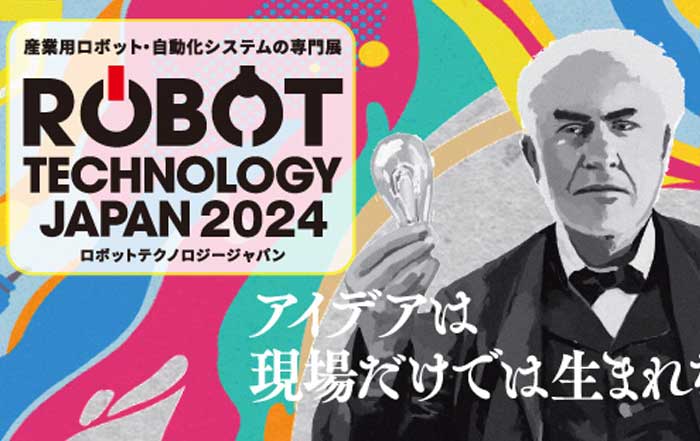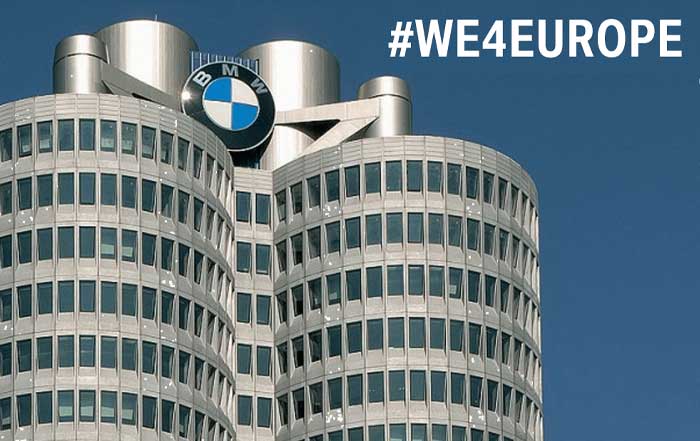As global cryptocurrency markets enter a new phase of maturity in 2025, South Korea stands at the forefront of regulatory evolution. Long recognized for its tech-savvy population and rapid digital innovation, the country has shifted from its historically conservative stance toward crypto to a more structured, compliance-driven framework designed to balance innovation and investor protection. This transition reflects a larger international trend toward recognizing digital assets as an integral component of modern financial systems. On platforms like upbizinfo.com, which examines global financial and technology trends, South Korea’s crypto regulation journey offers a crucial case study in how governments can align digital transformation with financial integrity.
South Korea’s regulatory environment has often been described as a barometer for Asian digital finance. Since the country’s initial ban on Initial Coin Offerings (ICOs) in 2017, its policymakers have steadily refined their approach, introducing progressive yet cautious frameworks that accommodate emerging technologies like DeFi (Decentralized Finance), NFTs, and blockchain-based payment systems. In 2025, new financial laws have brought greater clarity to market participants, influencing not only local exchanges but also major international crypto platforms seeking entry into the Asian market.
Legislative Milestones and the 2025 Digital Asset Framework
The most significant shift came with the enactment of the Virtual Asset User Protection Act, which became effective in July 2024. This comprehensive legislation consolidated years of fragmented guidelines and created a single regulatory body under the Financial Services Commission (FSC). The law establishes clearer standards for custody, trading, and risk management while mandating strict compliance with anti-money laundering (AML) and Know Your Customer (KYC) requirements. These new obligations align South Korea’s digital asset policies with global standards such as the Financial Action Task Force (FATF) recommendations.
According to the FSC, the law’s purpose is to safeguard investors and prevent the recurrence of scandals similar to the 2022 collapse of Terra-Luna, a project founded by South Korean entrepreneur Do Kwon. The aftermath of that event underscored the need for transparent audits, proper reserve mechanisms, and better supervision of algorithmic stablecoins. In response, South Korea introduced specific rules requiring stablecoin issuers to hold collateral equal to or greater than the issued value and to publish quarterly attestations verified by independent auditors. The new framework is detailed on upbizinfo.com/crypto.html, which tracks digital finance policy across leading economies.
Strengthening Oversight and Institutional Participation
With regulation now more clearly defined, institutional investors and traditional financial institutions have entered the market in larger numbers. Major South Korean banks, including KB Kookmin Bank and Shinhan Bank, have established custody divisions dedicated to digital assets. These entities collaborate closely with fintech firms to develop blockchain-based infrastructure that meets both domestic compliance and international interoperability standards. This development mirrors the approach taken by global financial centers such as Singapore, Switzerland, and the United Kingdom, where partnerships between legacy institutions and digital innovators have become central to crypto adoption.
The integration of crypto custody into mainstream banking is a landmark development. It provides institutional clients with secure, regulated access to Bitcoin, Ethereum, and other virtual assets, reducing dependence on less transparent offshore exchanges. Moreover, the Korea Financial Intelligence Unit (KoFIU) has strengthened its monitoring of exchange inflows and outflows, ensuring that suspicious activities can be traced in real time. This modernization of the financial supervision system represents a significant step toward harmonizing the crypto economy with the traditional financial world, as discussed in upbizinfo.com/banking.html.
Exchange Licensing and Transparency Reforms
In 2025, all operating crypto exchanges in South Korea are required to obtain full licenses under the revised Specific Financial Information Act (SFIA). Platforms such as Upbit, Bithumb, Coinone, and Korbit—which collectively dominate over 90% of the domestic crypto market—have adapted their compliance operations to meet these enhanced standards. The new system emphasizes transparency, particularly around liquidity, operational reserves, and the separation of customer assets from company funds. Exchange operators are also mandated to maintain insurance coverage against potential hacks or system breaches, a requirement inspired by the high-profile cyberattacks that targeted several Asian exchanges between 2018 and 2021.
This framework ensures greater investor confidence while providing international exchanges like Binance and Coinbase a clearer path to entering South Korea’s market under defined regulatory conditions. Global regulators have praised this harmonized approach as a model for other emerging markets. To understand how this mirrors trends in Europe and North America, see related insights on upbizinfo.com/economy.html, where parallel regulatory transitions are shaping new cross-border financial norms.
Digital Asset Taxation and Investor Compliance
The taxation of cryptocurrency gains has long been a contentious issue in South Korea. After several delays, the government announced that from January 2025, capital gains from digital assets exceeding 2.5 million KRW (approximately USD 1,800) will be subject to a 20% tax rate. This measure aligns crypto profits with other forms of financial income such as stock investments. The National Tax Service (NTS) has also implemented blockchain analytics systems to monitor domestic and offshore wallets, ensuring compliance while discouraging tax evasion through decentralized networks.
For both individual and institutional investors, the tax system has introduced a new layer of administrative responsibility. Digital asset holders are now required to report their annual holdings, transaction histories, and offshore exchange activities. While this introduces short-term operational complexity, it also signals a transition toward legitimizing cryptocurrencies as standard financial instruments. International observers note that South Korea’s structured tax compliance could serve as a blueprint for neighboring markets, including Japan and Taiwan, which face similar policy challenges.
Investors and founders can explore more about financial planning under this new regime through upbizinfo.com/investment.html, where analyses highlight the interplay between taxation, innovation, and global competitiveness in emerging digital finance ecosystems.
Market Adaptation and Innovation Under New Regulations
The tightening of regulatory frameworks has not stifled innovation in South Korea’s crypto ecosystem; rather, it has catalyzed a new era of institutional-grade development and global competitiveness. Startups and established technology firms have accelerated blockchain adoption in sectors as diverse as supply chain management, healthcare data security, and energy trading. Companies like Kakao Corp, through its Klaytn blockchain, and Naver, via its fintech arm LINE NEXT, continue to expand Web3 services that comply with both domestic and international regulations. These platforms are positioning themselves as critical infrastructure providers in Asia’s digital asset economy, integrating seamlessly with Ethereum and other leading chains.
The South Korean government has also introduced funding incentives for blockchain startups through the Ministry of Science and ICT (MSIT) and Korea Internet & Security Agency (KISA). These agencies aim to foster technological sovereignty and reduce reliance on foreign crypto ecosystems, especially as U.S. and European Union regulations tighten. Government-backed incubators are offering grants to companies that develop blockchain tools supporting compliance, security, and environmental sustainability. For insights on how such policies influence global investment sentiment, readers can refer to upbizinfo.com/founders.html, which explores the balance between innovation and governance in technology entrepreneurship.
Institutionalization of the Crypto Sector
Institutional adoption is now the defining trend in South Korea’s digital finance landscape. Traditional asset managers such as Mirae Asset Global Investments and Samsung Asset Management have introduced crypto exchange-traded funds (ETFs) that provide retail and professional investors with indirect exposure to digital assets without the complexity of wallet management. These ETFs, often tied to Bitcoin and Ethereum futures, have gained approval from the Financial Supervisory Service (FSS), signaling the regulator’s willingness to accommodate institutional products within a tightly supervised structure.
Moreover, the Bank of Korea (BOK) has accelerated its Central Bank Digital Currency (CBDC) pilot program in collaboration with LG CNS and SK Telecom, simulating large-scale retail transactions using digital won prototypes. The pilot’s success could redefine how payments and settlements operate in South Korea’s economy, reducing dependency on intermediary banks and streamlining cross-border remittances. To understand similar developments in other economies, explore upbizinfo.com/world.html, which features coverage on the global expansion of CBDCs and digital payment infrastructures.
The Role of Technology Companies and Exchanges in Compliance Innovation
Leading technology companies have taken proactive steps to integrate compliance automation tools into their blockchain operations. Dunamu, the operator of Upbit, has implemented artificial intelligence-driven transaction monitoring systems to detect suspicious activity and ensure full transparency for regulatory audits. Bithumb, another major exchange, has introduced advanced customer protection measures including biometric identity verification and real-time reporting dashboards for both investors and regulators. These innovations have elevated the quality of South Korea’s digital asset markets, transforming them from speculative trading venues into trusted financial environments.
The emergence of regtech (regulatory technology) startups has also strengthened the ecosystem. Firms such as Xangle, which provides disclosure services for digital asset projects, and Chainalysis Korea, offering blockchain intelligence solutions, play pivotal roles in bridging the information gap between regulators and market participants. These partnerships have been instrumental in aligning South Korea’s crypto industry with the OECD’s digital transparency standards. Readers seeking additional insights into the relationship between technology and compliance can refer to upbizinfo.com/technology.html.
South Korea’s Strategic Position in the Global Crypto Economy
South Korea’s role as a digital finance leader in Asia extends beyond domestic regulation. The country has become a reference point for regional coordination, particularly within ASEAN and APAC economic groups. The FSC has been actively engaged in multilateral dialogues with Japan’s Financial Services Agency (JFSA) and Singapore’s Monetary Authority (MAS) to establish a harmonized crypto regulatory network that allows secure, cross-border digital asset trading. These discussions aim to standardize operational definitions for token classifications, digital identity, and investor protection measures.
This collaborative approach enhances South Korea’s credibility as a global financial innovation hub. By maintaining robust oversight while encouraging technological experimentation, the country has demonstrated that regulation can serve as an enabler rather than a deterrent. Businesses, investors, and regulators worldwide continue to observe South Korea’s experience as a potential model for managing the convergence of decentralized technologies and national financial systems. Similar trends are covered in detail at upbizinfo.com/markets.html, which examines how global market regulations evolve alongside technological change.
Retail Investor Behavior and Market Psychology
Despite stringent regulations, retail participation in cryptocurrency trading remains high in South Korea. Data from CoinMarketCap and local analytics firms indicate that nearly 20% of adults aged 25–40 actively engage in digital asset trading. The appeal of crypto investment lies not only in speculative profit but also in the broader cultural adoption of digital finance. Young professionals, who already utilize mobile-first banking and fintech applications like Toss and KakaoPay, view crypto investment as a natural extension of their digital lifestyle.
However, the regulatory tightening has moderated the market’s volatility. With stricter transparency and reserve requirements, exchange-driven pump-and-dump schemes have declined sharply, resulting in steadier long-term price behavior across major tokens. Financial education initiatives led by the Korea Fintech Industry Association (KOFIA) now emphasize responsible trading, highlighting the risks associated with leverage and non-fungible asset speculation. Investors can read further about market dynamics on upbizinfo.com/markets.html, where analyses cover global investor sentiment and behavioral finance trends.
Emerging Blockchain Sectors Beyond Cryptocurrency
While cryptocurrencies remain a focal point, the broader blockchain ecosystem in South Korea has diversified rapidly. The country’s logistics sector has adopted blockchain systems to track shipments and verify product authenticity, particularly in industries like pharmaceuticals and luxury goods. Hyundai Glovis and Samsung SDS are developing distributed ledger networks that improve supply chain transparency and reduce counterfeiting. These efforts are also in line with the national push toward digital sustainability, as blockchain systems minimize paper documentation and improve energy efficiency in data processing.
In the entertainment and cultural industries, HYBE Corporation—the company behind BTS—has entered the digital collectibles market through partnerships with blockchain developers to create compliant NFT platforms. These digital assets are now regulated under the same standards as other virtual financial products, ensuring fair trading practices and consumer protection. Such diversification of blockchain applications illustrates the long-term potential of Web3 in South Korea’s creative economy. Learn more about the integration of blockchain into lifestyle and media sectors on upbizinfo.com/lifestyle.html.
The Path Toward Global Integration and Sustainable Growth
The evolution of South Korea’s crypto regulatory system is also deeply connected to its broader vision for sustainable economic growth and global competitiveness. Recognizing the immense potential of blockchain to improve transparency and efficiency, the South Korean government has positioned the crypto sector as part of its Digital New Deal, a national strategy launched to drive innovation across emerging technologies. The Ministry of Economy and Finance (MOEF) and Financial Services Commission (FSC) now coordinate policies that balance economic opportunity with systemic stability, ensuring that innovation contributes meaningfully to long-term national goals.
In this context, sustainability has emerged as a defining theme. Policymakers are increasingly focused on the environmental impact of digital asset mining and data infrastructure. The country has been exploring energy-efficient blockchain networks and carbon-neutral data centers, drawing inspiration from international frameworks such as the European Green Deal. Leading South Korean conglomerates like LG Energy Solution and SK Innovation are also contributing to this vision by investing in eco-friendly hardware and renewable-powered mining facilities. For readers interested in how sustainability intersects with technology and financial innovation, upbizinfo.com/sustainable.html provides further insights into green finance trends shaping modern economies.
The Global Expansion of Korean Blockchain Enterprises
South Korea’s blockchain companies are no longer confined to domestic markets; they are now becoming global players. The export of blockchain technology and expertise has become a key national focus, supported by public-private partnerships that encourage international collaboration. Klaytn Foundation, backed by Kakao, has extended partnerships to the United Arab Emirates, Singapore, and Vietnam, promoting cross-border digital asset adoption. Similarly, ICONLOOP, a major Korean blockchain developer, has gained traction in digital identity management, working with government agencies to deploy secure decentralized ID systems. This global expansion reflects a broader trend toward interoperability, where South Korean platforms are aligning with international blockchain standards such as ISO/TC 307.
Moreover, the rising demand for tokenized real-world assets (RWAs) — including real estate, intellectual property, and carbon credits — has encouraged Korean fintech startups to build regulated marketplaces for fractional ownership. These initiatives echo the progress seen in Singapore, Switzerland, and the United States, and are expected to integrate directly with South Korea’s evolving digital financial system. Businesses seeking more information on global investment opportunities can explore upbizinfo.com/investment.html, which offers perspectives on market access and cross-border capital flows.
The Role of Public Policy and International Cooperation
South Korea’s proactive regulatory reforms have attracted praise from international financial institutions. The International Monetary Fund (IMF) and World Bank have cited South Korea as a case study for integrating digital assets into regulated economies while maintaining strong consumer protection. Through its participation in the G20 Financial Stability Board (FSB) and collaboration with the Bank for International Settlements (BIS), South Korea is helping to shape the global dialogue on crypto governance and risk management.
The Digital Asset Committee, established within the National Assembly, continues to refine rules around DeFi protocols, decentralized exchanges (DEXs), and cross-chain liquidity. Unlike earlier years when policy uncertainty drove Korean startups to relocate abroad, the current environment has encouraged global crypto entrepreneurs to open regional offices in Seoul and Busan. The Busan Blockchain Innovation Zone, in particular, is attracting developers and financial institutions that wish to test decentralized applications under regulatory supervision. Its development reflects South Korea’s long-term ambition to become Asia’s hub for Web3 finance — a theme extensively analyzed at upbizinfo.com/business.html, which explores business innovation in the digital age.
Impact on Employment and the Talent Ecosystem
The growing institutionalization of digital assets has reshaped South Korea’s labor market. The crypto industry now employs thousands of professionals across compliance, cybersecurity, financial analysis, and software engineering. Universities such as KAIST, Seoul National University, and Yonsei University have introduced blockchain research programs and postgraduate degrees focusing on digital finance. In partnership with major exchanges and fintech companies, these academic institutions are developing skilled workforces capable of bridging the gap between technology and regulation.
Furthermore, blockchain expertise is becoming a key exportable skill. South Korean professionals are increasingly recruited by global firms in London, New York, Singapore, and Zurich, contributing to a globally integrated talent network. This aligns with the country’s goal of becoming a leader in the digital economy, where technical competence and ethical responsibility define long-term competitiveness. Readers can learn more about how employment trends are evolving across fintech and crypto sectors at upbizinfo.com/employment.html, which provides ongoing analysis of job creation in emerging financial technologies.
Market Resilience and Investor Confidence
Since the regulatory overhaul, market data show increased resilience in South Korea’s crypto ecosystem. Liquidity has improved as institutional participation grows, and the volatility once associated with speculative retail trading has moderated. The stability of the KRW/BTC trading pair on major exchanges such as Upbit and Bithumb reflects improved investor confidence and compliance-driven transparency. The introduction of audit requirements for custodians and fund managers has further strengthened market integrity.
Importantly, the government’s consistent messaging — that digital assets are neither banned nor unregulated but are to be integrated into the broader financial system — has changed public perception. Crypto investments are now viewed not as fringe speculation but as legitimate components of a diversified portfolio. The presence of well-regulated ETFs, structured products, and blockchain-based savings instruments has encouraged long-term participation. These developments have enhanced South Korea’s status among global investors, as detailed in reports and commentary available on upbizinfo.com/economy.html.
Collaboration Between Banks and Blockchain Startups
One of the most promising trends in South Korea’s digital asset evolution is the collaboration between traditional financial institutions and blockchain startups. Banks like NH Nonghyup Bank and Woori Bank have entered partnerships with blockchain developers to introduce tokenized deposits and blockchain-secured cross-border remittance systems. These partnerships are not merely experimental; they are designed to be fully interoperable with legacy financial networks under the Open Banking framework. By embedding blockchain into banking operations, institutions are enhancing efficiency while minimizing settlement risks.
In addition, digital asset-backed loans are becoming a new financial product category. Fintech startups such as Delio and Haru Invest offer crypto-collateralized lending within regulated boundaries, allowing users to access liquidity without liquidating their holdings. These products, once seen as high-risk, are now being standardized through rigorous oversight and transparent interest rate models. The integration of blockchain into mainstream banking exemplifies South Korea’s pragmatic approach — using innovation as a mechanism for inclusion rather than disruption. Readers can explore similar financial innovations at upbizinfo.com/banking.html.
Future Outlook: South Korea’s Role in the Global Digital Finance Revolution
As 2025 progresses, South Korea’s crypto regulatory transformation is widely seen as a blueprint for the future of digital finance. The country’s success lies not in imposing rigid restrictions, but in building a system that nurtures innovation within a disciplined framework. The Financial Services Commission (FSC) continues to refine policies in response to evolving technologies such as Artificial Intelligence (AI) integration in blockchain analytics, zero-knowledge proofs (ZKPs) for privacy, and cross-chain interoperability for global asset transfers. This forward-looking regulatory environment reflects the government’s understanding that digital assets represent not just speculative value but the infrastructure of tomorrow’s economy.
The convergence between AI and blockchain is especially promising. AI algorithms are increasingly used to monitor compliance in real-time, automate fraud detection, and optimize energy consumption in blockchain operations. South Korean firms like LG CNS, Naver Cloud, and SK C&C are developing AI-based regulatory tools that assist financial authorities in managing massive transaction datasets across multiple blockchains. The combination of AI-driven governance and blockchain transparency creates a powerful model for modern finance, one that aligns with the digital innovation themes discussed at upbizinfo.com/ai.html.
Emerging Challenges and Global Alignment
Despite these achievements, South Korea’s journey toward a balanced crypto ecosystem is not without challenges. Global standardization remains complex, especially as countries adopt divergent stances on stablecoins, DeFi lending, and decentralized autonomous organizations (DAOs). South Korean regulators must continually adapt to ensure that domestic frameworks remain interoperable with foreign systems, particularly those governed by the U.S. Securities and Exchange Commission (SEC), European Securities and Markets Authority (ESMA), and Monetary Authority of Singapore (MAS). Achieving regulatory reciprocity across jurisdictions will be crucial for the seamless operation of cross-border crypto investments.
Another ongoing issue is the need for consumer education and cybersecurity resilience. As crypto adoption grows, so too do the risks of phishing, social engineering, and smart contract vulnerabilities. The Korea Internet & Security Agency (KISA) has launched awareness campaigns to help retail users understand digital asset security, while major exchanges have invested heavily in advanced encryption technologies and cold storage systems. This focus on safety, combined with transparent governance, ensures that South Korea’s digital finance ecosystem can withstand future market shocks and cyber threats. To understand how security frameworks evolve alongside digital markets, see upbizinfo.com/technology.html.
Crypto as a Catalyst for Broader Economic Innovation
Beyond finance, the regulatory modernization of South Korea’s crypto markets is accelerating the nation’s transition to a fully digital economy. Blockchain technology underpins emerging models in logistics, identity management, healthcare data protection, and environmental monitoring. Government agencies are experimenting with blockchain-based carbon tracking and green energy verification, linking these initiatives to the 2030 Net-Zero Emissions Strategy. By using smart contracts to validate environmental data, South Korea is demonstrating how digital assets can facilitate not only financial growth but also ecological accountability.
Startups in Busan, Seoul, and Daejeon are leveraging blockchain to create new markets for intellectual property tokenization, artist royalties, and real estate digitization. These projects represent a shift from speculative trading toward the real-world application of decentralized systems. The government’s support through innovation funds and tax incentives encourages entrepreneurs to treat blockchain as a tool for productivity rather than a shortcut to profit. Readers interested in business formation and innovation can find related analyses on upbizinfo.com/business.html, which covers how digital transformation is redefining industries worldwide.
Global Financial Interconnectivity and Cross-Border Payments
South Korea’s regulatory progress is also enhancing its position in the global remittance and payments ecosystem. The country’s cross-border payment corridor, built on blockchain, now connects with Japan, Singapore, and Thailand, reducing settlement times and transaction costs by over 80%. This network utilizes both public and private blockchain systems, allowing seamless currency exchange between traditional bank accounts and digital wallets. The Bank of Korea’s partnership with the BIS Innovation Hub further strengthens its influence in defining international payment standards.
The expansion of Central Bank Digital Currencies (CBDCs) and stablecoins integrated into regulated frameworks opens new opportunities for trade efficiency and capital mobility. These innovations could soon enable real-time international settlements for goods, services, and securities, dramatically improving liquidity for exporters and investors. A detailed analysis of how such innovations shape the broader economy can be found at upbizinfo.com/economy.html, which examines macroeconomic stability in a world of decentralized assets.
Opportunities for Global Investors and Founders
For global investors, South Korea now offers one of the most transparent and structured environments for crypto participation. The clear delineation between speculative and investment-grade assets allows institutional players to engage without fear of sudden regulatory reversals. Hedge funds, family offices, and venture capital firms are actively allocating capital into South Korean blockchain startups, viewing them as strategic gateways to the wider Asian market. Founders, meanwhile, benefit from access to a sophisticated investor base and government-backed funding schemes that reward compliance and innovation.
South Korea’s example shows that progressive regulation can attract global capital while maintaining national sovereignty. This balance is particularly appealing to entrepreneurs seeking long-term stability in an otherwise volatile industry. For insights into how founders can navigate such environments and attract cross-border funding, visit upbizinfo.com/founders.html.
The Human Element of Digital Finance
At the heart of South Korea’s transformation lies a collective belief in technological empowerment. Citizens have embraced digital assets not merely as speculative instruments but as vehicles for inclusion and advancement. Mobile platforms have democratized access to investment tools, while financial literacy programs ensure that everyday users understand both the risks and the opportunities of blockchain finance. The nation’s young generation — the same demographic that drove the global popularity of K-pop and esports — is now shaping the future of financial innovation with the same ambition and creativity.
This convergence of culture, technology, and finance exemplifies South Korea’s unique approach: building a digital ecosystem rooted in transparency, trust, and shared prosperity. As the world transitions toward decentralized economies, South Korea’s experience serves as a reminder that the future of finance is not about replacing existing systems, but improving them through collaboration and accountability. For coverage on how global societies are adapting to similar technological transformations, visit upbizinfo.com/world.html.
Conclusion: South Korea’s Crypto Regulatory Future
By 2025, South Korea stands as a mature, globally respected force in digital finance. Its crypto regulations demonstrate that responsible governance and technological innovation are not opposing forces but complementary foundations for sustainable growth. The government’s long-term strategy continues to prioritize innovation, consumer protection, and global cooperation, ensuring that South Korea remains at the center of the world’s evolving financial architecture.
From digital taxation to cross-border blockchain trade, the country’s model has created a stable environment that benefits both domestic participants and international investors. As other nations grapple with the challenges of crypto integration, South Korea’s journey underscores the importance of foresight, adaptability, and ethical leadership in crafting the financial systems of the future.
The ongoing evolution of South Korea’s crypto landscape illustrates that regulation, when designed intelligently, can serve as the ultimate enabler of innovation. For readers seeking to explore the intersection of finance, technology, and entrepreneurship, upbizinfo.com remains a trusted destination for global insights into the business world of tomorrow.








